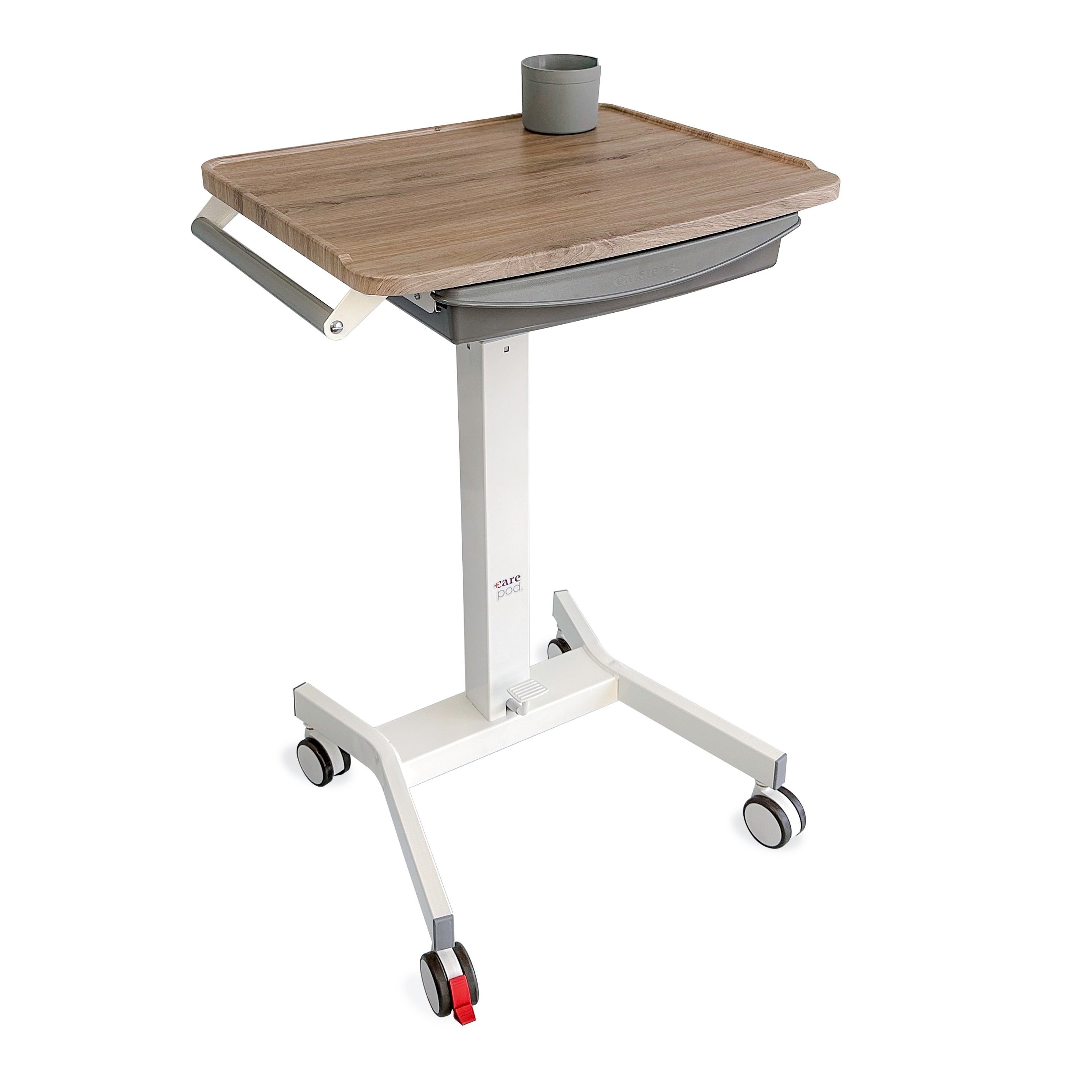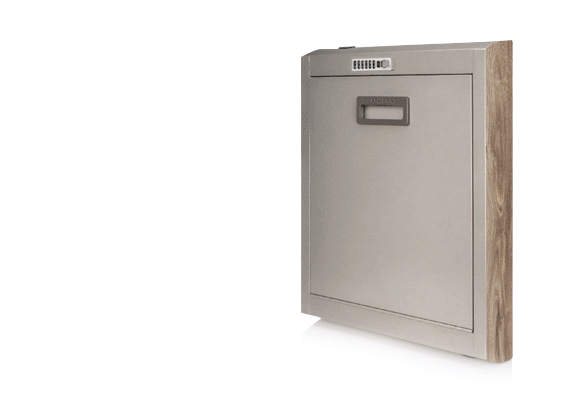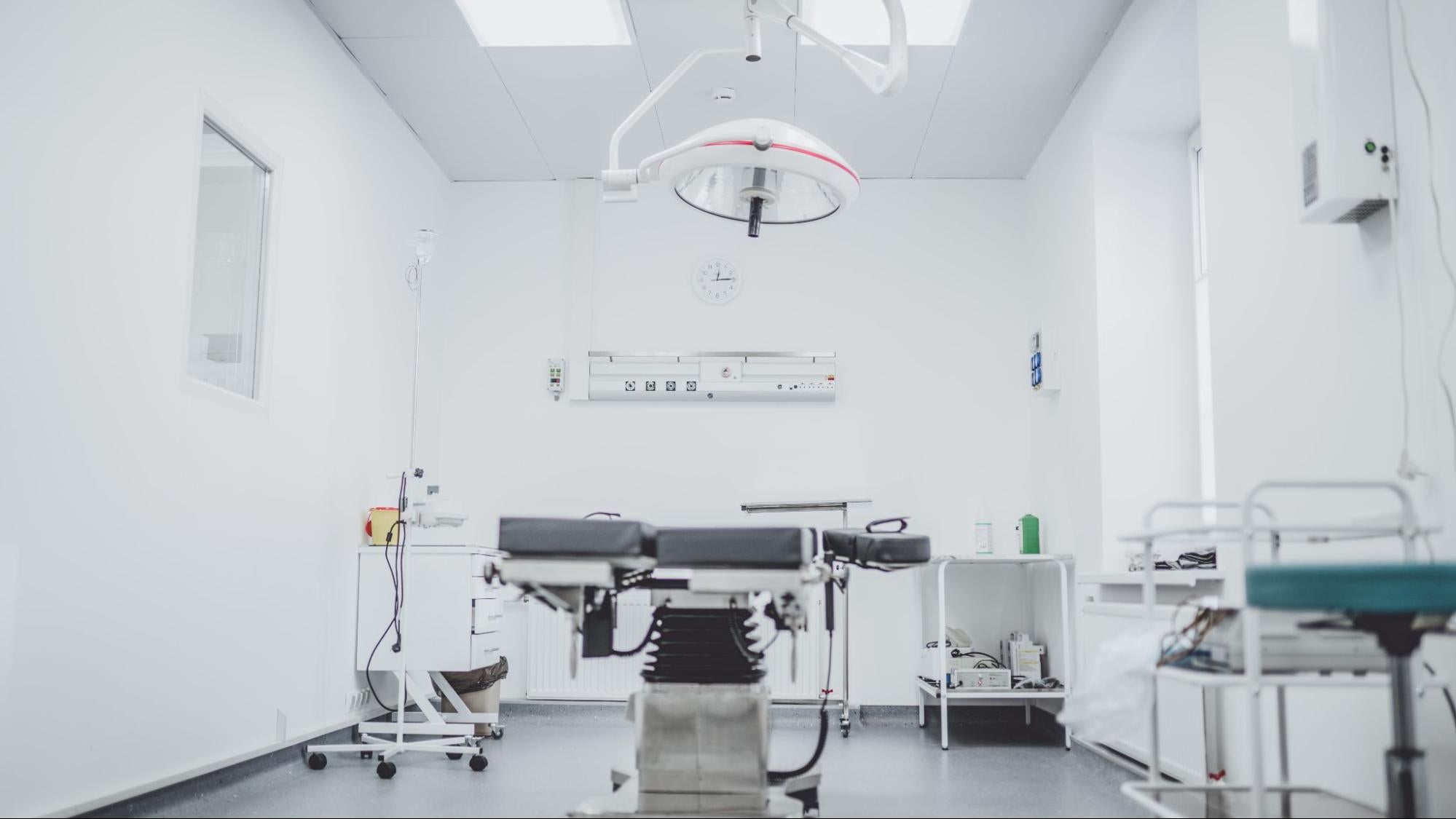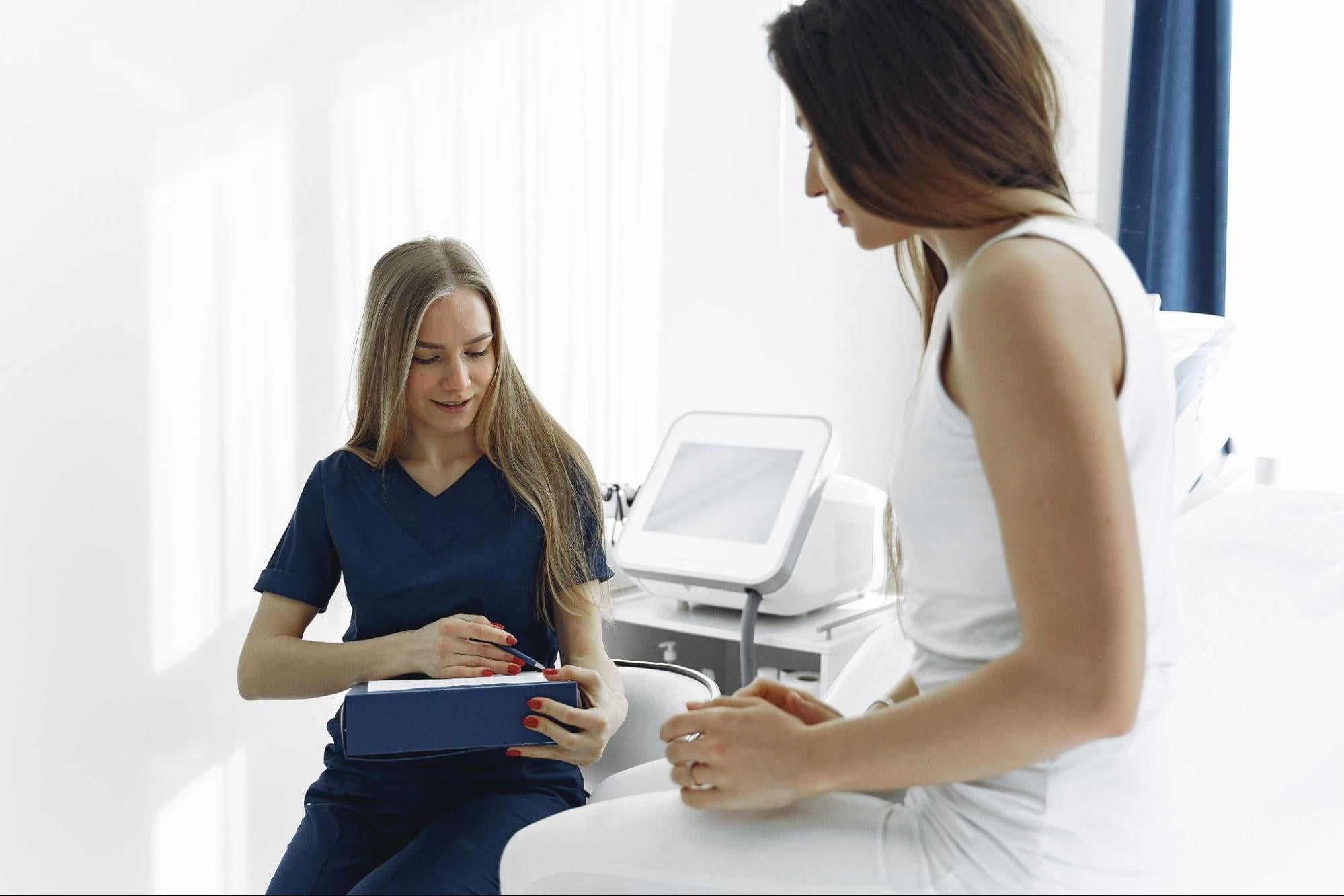Hospitals are busy places. Help boost the productivity of your staff and improve patient care by providing functional workstations. Wall-mounted workstations, foldable desks, or mobile charting stations are all excellent options. But how do you choose one that works the best for your facility?
Space is limited in hospitals, so anything portable or foldable can maximize efficient use of space. With all of the technology in healthcare, the need for flexible workspaces is growing. The best way to keep your stations clean and uncluttered is to choose the right furniture for the correct use.
Related: How New Technologies Are Transforming Patient Care
What to Consider When Shopping for a Workstation
There is more than meets the eye when it comes to the wide range of workstations built for hospitals. Choosing the best options for your facility comes down to the individual features.
Desk Size
Workstations come in many different sizes. A workstation that is too small makes it difficult to keep up with paperwork, charting, and other laptop work. But at the same time, a workstation that is too big and bulky will be in the way.
Technology
Consider what types of technology get the most use in your facility. If tablets are the preferred device, you can get away with much smaller workstations. For laptops, go a little larger. And for desktops, scanners, and other devices, go with a full-size workstation.
Load Capacity
Foldable and portable workstations come with lower weight capacities. Keep an eye on the load limits and compare the capacity to the equipment the workstation will handle. The good news is that as technology advances, it tends to become slimmer and lighter.
Power Supply Integration
Cord management is more than a nice-to-have feature. The ability to easily plug and unplug devices is a great feature. Workstations that integrate a power supply add a lot of flexibility. Your staff won't waste time hunting for cords or disrupting work with dying batteries.
Foldability
Not all workstations are foldable. One style that is preferred by some facilities, especially for tight spaces, is a folding desk. These desks typically mount to a wall and have the ability to fold up when not in use. With the rise of mobile devices like tablets in healthcare, these workstations are becoming increasingly popular.
Carsten's is proud to be a women-owned business focusing on medical equipment and charting supplies proudly made in America. For 130 years, we have been providing tools that help healthcare like the Walkaroo Workstation. Learn more today!
Installation
Some workstations require minimal assembly, while others are tedious to assemble. Consider who will be tasked with putting your workstations together and choose models that fit the appropriate skill level.
Workflow
Take into consideration how your facility operates. Will stationary desks mounted to walls work best, or mobile workstations on wheels can be carted from room to room? There is no perfect solution for every facility. The best choice is the one that works for your workflows and processes.
Accessories
The flexibility of a workstation is dependent on the availability of optional features. Many carts are made from metal and work well with magnetic storage and hooks. Some carts can be fitted with a monitor mount to keep screens off of the working surface. Keyboard trays, utility shelves, and supply drawers are other common accessories.
Price
At the end of the day, price plays a significant role in the final decision. Workstations can cost anywhere between a couple of hundred dollars and several thousand dollars, depending on the features.
Related: Charting in Healthcare: Why It Matters
Types of Workstations
Now that you have an idea of what to consider when comparing your options, let's take a look at the types of workstations available.
Mobile Workstations
Mobile workstations are the best choice for caregivers that need to move laptops or larger equipment from room to room. These desktops are typically large enough for one person to work on a laptop or complete paperwork. Many models have adjustable heights for sitting or standing. Some models feature a built-in supply drawer or an optional bracket for managing cords.
Folding Desks
For something more stationary, a folding desk offers a small work surface that can be mounted to any wall. These small and inconspicuous workstations provide a horizontal surface for tablets, laptops, or medication prep.
Wall-mounted Workstations
For a bit more storage capacity, a wall-mounted workstation can provide a space-saving compromise. Most models feature a fold-down desk along with storage for medical or IT supplies.
Best Materials for Hygienic Workstations
Healthcare facilities require frequent disinfection. All workstations should be made of non-porous materials that can withstand heavy chemical use. Workstations like the CarePod are made from powder-coated steel that makes cleaning easy. Routine cleaning according to the manufacturer's instructions will keep the unit functioning well and looking good.
Related: Record Keeping and Other Tips for New Teachers
The Take-Home Message on Choosing the Right Workstation
Choosing the right workstation for a hospital setting requires a thorough understanding of your needs. Spend some time observing staff and see how they are working and where additional or improved workstations might be needed. Choose options that provide portability or space-saving features to make sure the workstations fit into your facility seamlessly. At the end of the day, workstations aren't worth the investment unless your staff will use them to improve workflow.
Carsten's is a woman-owned medical equipment and supply business with 30 years of history. We are committed to improving the quality of care across all facets of the healthcare industry―starting with tools that make care provider's jobs easier. Shop our catalog today!






